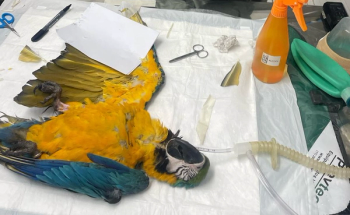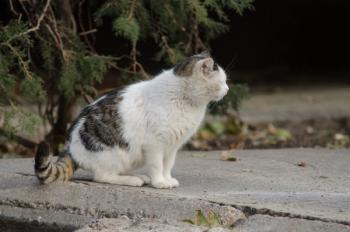
Research Updates: Investigating the impact of vaccine administration site changes in cats
Of the currently marketed feline vaccines, those against rabies and feline leukemia virus (FeLV) have been most commonly implicated in sarcoma development.
Of the currently marketed feline vaccines, those against rabies and feline leukemia virus (FeLV) have been most commonly implicated in sarcoma development. Historically, vaccines were routinely administered in the interscapular region, the most common site of presumptive injection-site sarcomas. In an attempt to gather more data about which vaccines most likely result in tumor development and to help with the management of affected cats, the Vaccine-Associated Feline Sarcoma Task Force published new recommendations in 1996 regarding recommended sites for routine feline vaccination. Veterinarians were asked to administer vaccines in standardized locations: rabies vaccines in the right rear leg, FeLV vaccines in the left rear leg, and vaccines containing antigens limited to feline herpesvirus-1, feline calicivirus, and feline panleukopenia virus with or without Chlamydia antigens in the right shoulder. In addition, vaccines were to be administered as distally on the limb as possible, with the hope that limb amputation in affected cats could be offered as a definitive treatment option.
Erika Meler, DVM, MS
The purpose of this study was to compare the locations of presumptive injection-site sarcomas diagnosed between 1990 and 1996 vs. those diagnosed between 1996 and 2006. The authors retrospectively identified 392 cats with a presumptive diagnosis of injection-site sarcoma. Although the most common tumor site during the entire study period was the interscapular region, occurrence in this location significantly decreased from 53.4% to 39.5% after 1996. A change in the percentage of tumors detected cranial vs. caudal to the diaphragm was noted over time as well: before 1996, 76% vs. 24% of injection-site sarcomas were cranial to and caudal to the diaphragm, respectively, whereas after 1996, these numbers were 60% and 40%, respectively. Additionally, the authors determined that the proportion of tumors arising from the lateral aspects of the thorax significantly decreased, and those diagnosed in the right thoracic limb, the pelvic limbs, and the lateral aspects of the abdomen significantly increased, especially on the right side.
Barrak Pressler, DVM, PhD, DACVIM
COMMENTARY
Vaccine-associated sarcomas are an uncommon but a feared cause of morbidity and mortality in cats. Previous studies have reported a prevalence between 1 and 10 per 10,000 cats. Although this study lacked definitive proof of vaccination at the presumptive injection-site sarcoma location and did not include histologic review of tumors to identify specific features of injection-site sarcoma sites, it is unlikely that the epidemiology of naturally occurring sarcomas (i.e. those not associated with vaccination) would change within this time frame.
This study's results suggest that many veterinarians are likely adhering to the 1996 Vaccine-Associated Feline Sarcoma Task Force recommendations. The study's results also imply that the rabies vaccine may be the most oncogenic. After 1996, when specific locations could be associated with specific vaccines, the right rear limb, which is the recommended site of rabies vaccination, was the most common site of injection-site sarcomas.
Unfortunately, a large concern that emerged from this study is the increasing occurrence of injection-site sarcomas on the lateral abdomen, which may require more aggressive treatment (body wall resection, internal organ excision) and more intensive postoperative management (more difficult adjuvant radiation therapy) than the interscapular region. As such, the authors' emphasis on the need to inject vaccines in the distal limb may be merited. The authors suggest that because of the looseness and elasticity of cats' skin, vaccine administration to a crouched cat in what appears to be the pelvic limb is actually a lateral abdominal injection because the skin shifts to the lateral aspect of the abdomen when the cat is standing.
This study did not investigate specific brands of vaccines or vaccine administration-associated factors. Further studies are needed to evaluate other aspects of feline vaccination protocols, including the impact of extension of vaccination intervals, possible identification of cats with a higher risk of developing injection-site sarcomas, and whether the use of single-antigen products affects the likelihood of injection-site sarcoma development.
Shaw SC, Kent MS, Gordon IK, et al. Temporal changes in characteristics of injection-site sarcomas in cats: 392 cases (1990-2006). J Am Vet Med Assoc 2009;234(3):376-380.
The information in "Research Updates" was provided by Erika Meler, DVM, MS, and Barrak Pressler, DVM, PhD, DACVIM, Department of Veterinary Clinical Sciences, School of Veterinary Medicine, Purdue University, West Lafayette, IN 47907.
Newsletter
From exam room tips to practice management insights, get trusted veterinary news delivered straight to your inbox—subscribe to dvm360.






